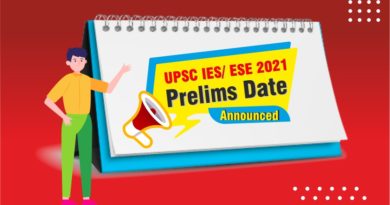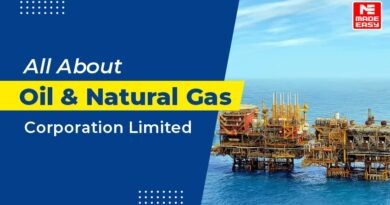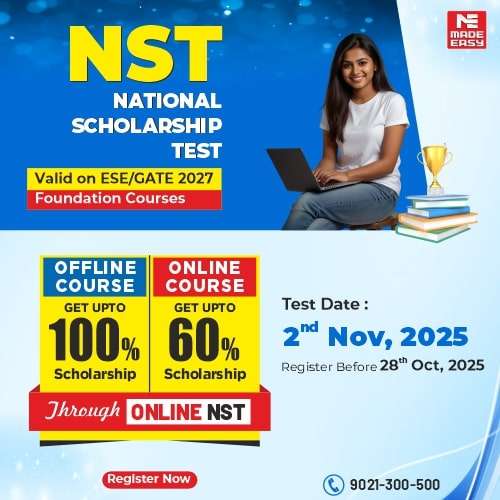Important Topics for GATE 2025: An Extensive Study Guide
Graduate Aptitude Test in Engineering (GATE) is one of the most challenging entrance examinations to secure a Master’s degree at top IITs and NITs, direct Doctoral programs, and lucrative jobs in Public Sector Undertaking (PSUs). It attracts lakhs of students from different eligible courses in engineering, technology, architecture, science, commerce, and arts every year. Before starting with the preparation for an attempt in this challenging examination, every GATE aspirant must be well aware of the GATE Exam Syllabus. Thus, we bring you an extensive study guide enlisting the GATE Exam Syllabus, of the significant engineering courses, that you must know before appearing in the GATE 2025 exam. Below is the detailed GATE 2025 Exam Syllabus, which aspirants can refer to before and during the Graduate Aptitude Test in Engineering (GATE) exam preparation.
GATE EXAM SYLLABUS FOR MECHANICAL ENGINEERING (ME)
Section 1: Engineering Mathematics
- Linear Algebra
- Calculus
- Differential equations
- Complex variables
- Probability and Statistics
- Numerical methods
Section 2: Applied Mechanics and Design
- Engineering Mechanics
- Mechanics of Materials
- Theory of Machines
- Vibrations
- Machine Design
Section 3: Fluid Mechanics and Thermal Sciences
- Fluid Mechanics
- Heat-Transfer
- Thermodynamics
- Applications
Section 4: Materials, Manufacturing, and Industrial Engineering
- Engineering Materials
- Casting, Forming, and Joining Processes
- Machining and Machine Tool Operations
- Metrology and Inspection
- Computer Integrated Manufacturing
- Production Planning and Control
- Inventory Control
- Operations Research
GATE EXAM SYLLABUS FOR CIVIL ENGINEERING (CE)
Section 1: Engineering Mathematics
- Linear Algebra
- Calculus
- Differential equation {Ordinary Differential Equation (ODE) and Partial Differential Equation (PDE)}
- Probability and Statistics
- Numerical methods
Section 2: Structural Engineering
- Engineering Mechanics
- Solid Mechanics
- Structural Analysis
- Construction Materials and Management
- Concrete Structures
- Steel Structures
Section 3: Geotechnical Engineering
- Soil Mechanics
- Foundation Engineering
Section 4: Water Resources Engineering
- Fluid Mechanics
- Hydraulics
- Hydrology
- Irrigation
Section 5: Environmental Engineering
- Water and Waste Water Quality and Treatment
- Air pollution
- Municipal Solid Wastes
Section 6: Transportation Engineering
- Transportation Infrastructure
- Highway pavements
- Traffic Engineering
Section 7: Geomatics Engineering
- Principles of surveying
- Errors and their adjustment
- Maps – scale, coordinate system
- Distance and angular measurement – Leveling and trigonometric leveling
- Traversing and triangulation survey
- Total Station
- Horizontal and vertical curves
- Photogrammetry and Remote Sensing – Scale, flying height
- Basics of remote sensing
- GIS
GATE EXAM SYLLABUS FOR ELECTRONICS AND COMMUNICATION ENGINEERING (EC)
Section 1: Engineering Mathematics
- Linear Algebra
- Calculus
- Differential Equations
- Vector Analysis
- Complex Analysis
- Probability and Statistics
Section 2: Networks, Signals, and Systems
- Circuit Analysis
- Continuous-time Analysis
- Discrete-time signals
Section 3: Electronic Devices
- Energy bands in intrinsic and extrinsic silicon
- Carrier transport
- Generation and recombination of carriers
- Poisson and continuity equations
- P-N junction
- Zener diode
- BJT
- MOS capacitor
- MOSFET
- LED
- Photo Diode and Solar Cell
Section 4: Analog Circuits
- Diode circuits
- BJT and MOSFET Amplifiers
- Op-amp Circuits
Section 5: Digital Circuits
- Number Representations
- Sequential circuits
- Data converters
- Semiconductor Memories
- Computer Organization
Section 6: Control Systems
- Basic control system components
- Feedback principle
- Transfer function
- Block diagram representation
- Signal flow graph
- Transient and steady-state analysis of LTI systems
- Frequency response
- Routh-Hurwitz and Nyquist stability criteria
- Bode and root-locus plots
- Lag, lead, and lag-lead compensation
- State variable model as well as solution of state equation of LTI systems
Section 7: Communications
- Random processes
- Analog communications
- Information theory
- Digital communications
Section 8: Electromagnetics
- Maxwell’s equations
- Plane waves and properties
- Transmission Lines
GATE EXAM SYLLABUS FOR ELECTRICAL ENGINEERING (EE)
Section 1: Engineering Mathematics
- Linear Algebra
- Calculus
- Differential equation
- Complex variables
- Probability and Statistics
Section 2: Electric Circuits
- Network elements
- KCL
- KVL
- Node and Mesh analysis
- Transient response of dc and ac networks
- Sinusoidal steady‐state analysis
- Resonance
- Thevenin’s theorem
- Norton’s theorem
- Superposition theorem
- Maximum power transfer theorem
- Two port networks
- Complex Power and power factor in ac circuits.
Section 3: Electromagnetic Fields
- Coulomb’s Law
- Electric Field Intensity
- Electric Flux Density
- Gauss’s Law
- Divergence
- Electric field and potential due to point, line, plane, and spherical charge distributions
- Effect of dielectric medium
- Capacitance of simple configurations
- Biot‐Savart’s law
- Ampere’s law
- Curl
- Faraday’s law
- Lorentz force
- Inductance
- Magnetomotive force
- Reluctance
- Magnetic circuits
- Self and Mutual inductance of simple configuration
Section 4: Signals and Systems
- Representation of continuous and discrete‐time signals
- Shifting and scaling operations
- Linear Time-Invariant and Causal systems
- Fourier series representation of continuous periodic signals
- Sampling theorem
- Laplace Transform and z-Transform
- Applications of Fourier Transform for continuous and discrete time signals
- R.M.S. value
- Shifting and scaling operations
Section 5: Electrical Machines
- Single phase transformer
- Three phase transformers
- DC machines
- Three-phase induction motors
- Operating principle of single-phase induction motors
- Synchronous machines
- Types of losses and efficiency calculations of electric machines
Section 6: Power Systems
- Power generation concepts
- AC and DC transmission concepts
- Models and performance of transmission lines and cables
- Series and shunt compensation
- Electric field distribution and insulators
- Distribution systems
- Per‐unit quantities
- Bus admittance matrix
- Gauss-Seidel and Newton-Raphson load flow methods
- Voltage and Frequency control
- Power factor correction
- Symmetrical components
- Symmetrical and unsymmetrical fault analysis
- Principles of over‐current
- Differential, directional, and distance protection
- Circuit breakers
- System stability concepts
- Equal area criterion
Section 7: Control Systems
- Mathematical modelling and representation of systems
- Feedback principle
- Transfer function
- Block diagrams and Signal flow graphs
- Transient and Steady‐state analysis of linear time-invariant systems
- Routh-Hurwitz and Nyquist criteria
- Bode plots
- Root loci
- Stability analysis, Lag, Lead and Lead‐Lag compensators
- P, PI, and PID controllers
- State space model
- Soluble of state equations of LTI systems
Section 8: Electrical and Electronic Measurements
- Bridges and Potentiometers
- Measurement of voltage, current, power, energy, and power factor
- Instrument transformers
- Digital voltmeters and multi-meters
- Phase, Time, and Frequency measurement
- Oscilloscopes
- Error analysis
Section 9: Analog and Digital Electronics
- Simple diode circuits
- Amplifiers
- Operational amplifiers
- Active filters
Section 10: Power Electronics
- Static V-I characteristics and firing/gating circuits for Thyristor
- MOSFET, IGBT
- DC to DC conversion
- Bidirectional ac to dc voltage source converters
- Single and three-phase voltage and current source inverters
- Line-commutated thyristor-based converters
- Issues of line current harmonics
- Power factor and Distortion factor of ac and dc converters
- Distortion factor of ac to dc converters
- Single-phase and three-phase inverters
- Sinusoidal pulse width modulation
GATE EXAM SYLLABUS FOR BIOTECHNOLOGY (BT)
Section 1: Engineering Mathematics
- Linear Algebra
- Calculus
- Differential Equations
- Probability and Statistics
- Numerical Methods
Section 2: General Biology
- Biochemistry
- Microbiology
- Immunology
Section 3: Genetics, Cellular, and Molecular Biology
- Genetics and Evolutionary Biology
- Cell Biology
- Molecular Biology
Section 4: Fundamentals of Biological Engineering
- Engineering Principles applied to Biological Systems
- Classical Thermodynamics and Bioenergetics
- Transport Processes
Section 5: Bioprocess Engineering and Process Technology
- Bioreaction Engineering
- Upstream and Downstream Processing
- Instrumentation and Process Control
Section 6: Plant, Animal, and Microbial Biotechnology
- Plants
- Animals
- Microbes
Section 7: Recombinant DNA Technology and other tools in Biotechnology
- Recombinant DNA Technology
- Molecular tools
- Analytical tools
- Computational tools
GATE EXAM SYLLABUS FOR COMPUTER SCIENCE AND INFORMATION TECHNOLOGY (CS)
Section 1: Engineering Mathematics
- Discrete Mathematics
- Linear Algebra
- Calculus
- Probability and Statistics
Section 2: Digital Logic
- Boolean algebra
- Combinational and sequential circuits
- Minimization
- Number representations and computer arithmetic (fixed and floating point)
Section 3: Computer Organization and Architecture
- Machine instructions and addressing modes
- ALU, data‐path and control unit
- Instruction pipelining
- Memory hierarchy
Section 4: Programming and Data Structures
- Programming in C
- Recursion
- Arrays, stacks, queues, linked lists, trees, binary search trees, binary heaps, graphs
Section 5: Algorithms
- Searching, sorting, hashing
- Asymptotic worst-case time and space complexity
- Algorithm design techniques
- Graph traversals, minimum spanning trees, shortest paths
Section 6: Theory of Computation
- Regular expressions and finite automata
- Context-free grammar and push-down automata
- Regular and context-free languages, pumping lemma
- Turing machines and undecidability
Section 7: Compiler Design
- Lexical analysis, parsing, syntax-directed translation
- Runtime environments
- Intermediate code generation
- Local optimization
- Data flow analyses
Section 8: Operating System
- System calls, processes, threads, inter‐process communication, concurrency, and synchronization.
- Deadlock
- CPU and I/O scheduling
- Memory management and virtual memory
- File systems
Section 9: Databases
- ER‐model
- Relational model
- Integrity constraints and normal forms
- Transactions and concurrency control
Section 10: Computer Networks
- Concept of layering
- Data link layer
- Routing protocols
- Fragmentation and IP addressing, IPv4, CIDR notation, Basics of IP support protocols, Network Address Translation
- Transport layer
- Application layer protocols
GATE EXAM SYLLABUS FOR CHEMICAL ENGINEERING (CH)
Section 1: Engineering Mathematics
- Linear Algebra
- Calculus
- Differential equations
- Complex variables
- Probability and Statistics
- Numerical Methods
Section 2: Process Calculations and Thermodynamics
- Steady and unsteady state mass and energy balances including multiphase, multi-component, reacting, and non-reacting systems.
- Use of tie components
- Recycle, bypass and purge calculations
- Gibb’s phase rule and degree of freedom analysis
- First and Second laws of thermodynamics.
- Applications of first law to close and open systems
- Second law and Entropy
- Thermodynamic properties of pure substances
- Properties of mixtures
- Phase equilibria
- Chemical reaction equilibrium
Section 3: Fluid Mechanics and Mechanical Operations
Fluid statics
- Surface tension
- Newtonian and non-Newtonian fluids
- Shell-balances including differential form of Bernoulli equation and energy balance
- Macroscopic friction factors
- Dimensional analysis and similitude
- Flow through pipeline systems
- Flow meters
- Pumps and compressors
- Elementary boundary layer theory
- Flow past immersed bodies including packed and fluidized beds
Turbulent flow
- Fluctuating velocity
- Universal velocity profile and pressure drop
- Particle size and shape
- Particle size distribution
- Size reduction and classification of solid particles
- Free and hindered settling
- Centrifuge and cyclones
- Thickening and classification
- Filtration
- Agitation and mixing
- Conveying of solids
Section 4: Heat Transfer
- Equation of energy
- Steady and unsteady heat conduction
- Convection and radiation
- Thermal boundary layer and heat transfer coefficients
- Boiling, condensation, and evaporation
- Types of heat exchangers and evaporators and their process calculations
- Design of double pipe, shell and tube heat exchangers, and single and multiple effect evaporators
Section 5: Mass Transfer
- Fick’s laws
- Molecular diffusion in fluids
- Mass transfer coefficients
- Film
- Penetration and surface renewal theories
- Momentum, heat and mass transfer analogies
- Stage-wise and continuous contacting and stage efficiencies
- HTU & NTU concepts
- Design and operation of equipment for distillation
- Absorption
- Leaching
- Liquid-liquid extraction
- Drying
- Humidification, dehumidification
- Adsorption
- Membrane separations
Section 6: Chemical Reaction Engineering
- Theories of reaction rates
- Kinetics of homogeneous reactions
- Interpretation of kinetic data
- Single and multiple reactions in ideal reactors
- Non-ideal reactors
- Residence time distribution
- Single parameter model
- Non-isothermal reactors
- Rate and performance equations for catalyst deactivation
- Kinetics of heterogeneous catalytic reactions
- Diffusion effects in catalysis
Section 7: Instrumentation and Process Control
- Measurement of process variables
- Sensors
- Transducers and their dynamics
- Process modeling and linearization
- Transfer functions and dynamic responses of various systems
- Systems with inverse response
- Process reaction curve
- P&ID equipment symbols
- Controller modes (P,PI, and PID)
- Control valves
- Analysis of closed-loop systems including stability
- Frequency response
- Controller tuning
- Cascade and feed forward control
Section 8: Plant Design and Economics
- Principles of process economics and cost estimation including depreciation and total annualized cost
- Cost indices
- Rate of return
- Payback period
- Discounted cash flow
- Optimization in process design and sizing of chemical engineering equipment
- Such as compressors, heat exchangers, and multistage contactors.
Section 9: Chemical Technology
- Inorganic chemical industries (sulfuric acid, phosphoric acid, chlor-alkali industry)
- Fertilizers (Ammonia, Urea, SSP, and TSP)
- Natural products industries (Pulp and Paper, Sugar, Oil, and Fats)
- Petroleum refining and petrochemicals
- Polymerization industries (polyethylene, polypropylene, PVC, and polyester synthetic fibers)
GATE EXAM SYLLABUS FOR PRODUCTION AND INDUSTRIAL ENGINEERING (PI)
Section 1: Engineering Mathematics
- Linear Algebra
- Calculus
- Differential equations
- Complex variables
- Numerical Methods
Section 2: General Engineering
- Engineering Materials
- Applied Mechanics
- Theory of Machines and Design
- Thermal and Fluids Engineering
- Thermodynamics
Section 3: Manufacturing Processes I
- Casting
- Metal forming
- Joining of materials
- Powder Processing
- Polymers and Composites
Section 4: Manufacturing Processes II
- Machining
- Machine Tools
- Advanced Manufacturing
- Computer Integrated Manufacturing
Section 5: Quality and Reliability
- Metrology and Inspection
- Quality management
- Reliability and Maintenance
Section 6: Industrial Engineering
- Product Design and Development
- Work System Design
- Facility Design
Section 7: Operations research and Operations management
- Operation Research
- Engineering Economy and Costing
- Production control
- Project management – PERT, CPM, GERT, and Gantt chart.
GATE Online Application Process 2025
GATE online application process 2025 is a hassle-free process for every eligible aspirant. All applicants must first take note of the important dates related to the GATE online application 2025 very carefully to avoid missing any of the critical stages associated with the GATE 2025 exam. The important dates are as follows:
- GATE Online Application Processing System starting date: 24th August 2024 (https://gate2025.iitr.ac.in/)
- GATE Online Application Processing System closing date (without late fee): 26th September 2024
- GATE Online Application Processing System extended closing date (with late fee): 7th October 2024
- Last Date for Requesting Change of Examination City, Category, or Paper (payable): November 2024 (Tentative)
- Online Availability of Admit Card (for download): January 2025 (Tentative)
- GATE 2025 Examination (dates):
- 1st February 2025 (Saturday)
- 2nd February 2025 (Sunday)
- 15th February 2025 (Saturday)
- 16th February 2025 (Sunday)
- GATE 2025 Examination (timings):
- Forenoon: 9:30 AM to 12.30 PM IST (Tentative)
- Afternoon: 2.30 PM to 5.30 PM IST (Tentative)
- Result Announcement: March 2025 (Tentative)
All aspirants must visit https://gate2025.iitr.ac.in/ and ensure that they have all the required documents available with them before applying for the upcoming Graduate Aptitude Test in Engineering exam. Here are some points that every GATE 2025 exam aspirant must remember while filling up the application form:
- Applicants must fill in the details very carefully.
- The image of the candidate and their signature should be within the specified size limits.
- Applicants who have to produce a caste certificate must ensure that all the details in the scanned image are clear.
- Moreover, the candidates must upload the scanned copy only in PDF format. Also, the dimensions must be within the specified size limit.
- GATE online application process 2025 begins as soon as the applicant accepts the terms and conditions.
- After that, he/she will have to fill out the form very carefully. Next, he/she will upload all relevant images and documents.
- The aspirant must review their application form very carefully before final submission.
- After that, the candidate will be directed to the payment page. The candidate must pay the specified fee for the GATE 2025 exam to complete their candidature.
- Any false information produced will compulsorily lead to the cancellation of the candidature. Therefore, all candidates must fill in only the legit data in the application form.
Hope this blog post offered you with the required information regarding the GATE 2025 exam.
Keep working hard and create your path to a successful career via the GATE exam.
All the best!
Dear Aspirants,
Your preparation for GATE, ESE, PSUs, and AE/JE is now smarter than ever — thanks to the MADE EASY YouTube channel.
This is not just a channel, but a complete strategy for success, where you get toppers strategies, PYQ–GTQ discussions, current affairs updates, and important job-related information, all delivered by the country’s best teachers and industry experts.
If you also want to stay one step ahead in the race to success, subscribe to MADE EASY on YouTube and stay connected with us on social media.
MADE EASY — where preparation happens with confidence.

MADE EASY is a well-organized institute, complete in all aspects, and provides quality guidance for both written and personality tests. MADE EASY has produced top-ranked students in ESE, GATE, and various public sector exams. The publishing team regularly writes exam-related blogs based on conversations with the faculty, helping students prepare effectively for their exams.





